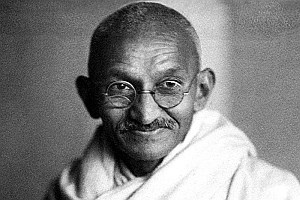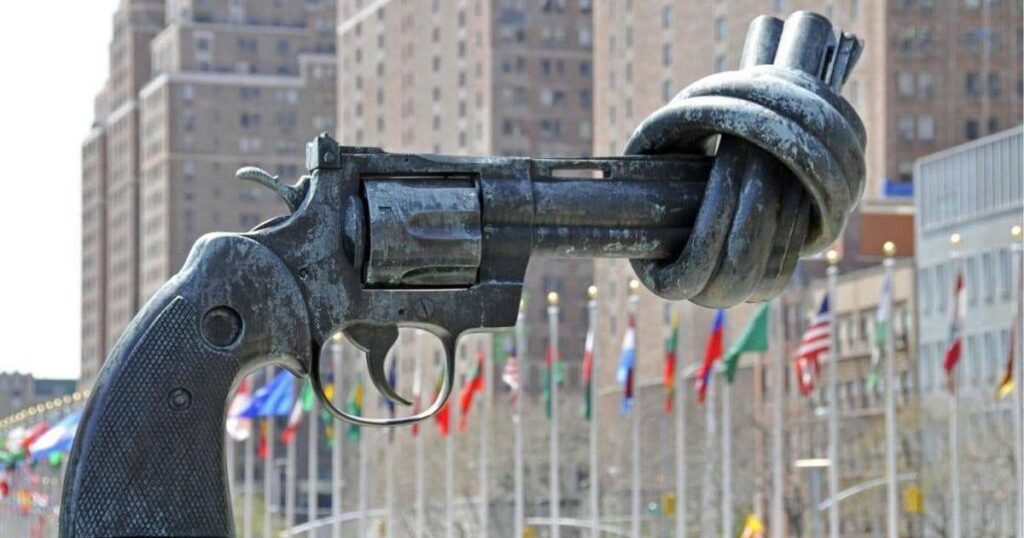 Friday, 2 October is International Day of Non-violence. It is the birthday of Mahatma Gandhi, leader of the Indian independence movement and pioneer of the philosophy and strategy of non-violence. Non-violence is the greatest force at the disposal of mankind. It is the mightiest weapon devised by ingenuity of Man, Mahatma Gandhi said. It is also a human value which guides human behaviour and leads to peace and integrity.
Friday, 2 October is International Day of Non-violence. It is the birthday of Mahatma Gandhi, leader of the Indian independence movement and pioneer of the philosophy and strategy of non-violence. Non-violence is the greatest force at the disposal of mankind. It is the mightiest weapon devised by ingenuity of Man, Mahatma Gandhi said. It is also a human value which guides human behaviour and leads to peace and integrity.
Say No to Violence
The International Day of Non-Violence is observed on 2 October, the birthday of Mahatma Gandhi, leader of the Indian independence movement and pioneer of the philosophy and strategy of non-violence.
According to General Assembly resolution A/RES/61/271 of 15 June 2007, which established the commemoration, the International Day is an occasion to “disseminate the message of non-violence, including through education and public awareness”. The resolution reaffirms “the universal relevance of the principle of non-violence” and the desire “to secure a culture of peace, tolerance, understanding and non-violence”.
Mahatma Gandhi
 Mohandas Karamchand Gandhi was an Indian activist who was the leader of the Indian independence movement against British rule. Employing nonviolent civil disobedience, Gandhi led India to independence and inspired movements for civil rights and freedom across the world. He is more commonly called Mahatma Gandhi; mahatma is an honorific meaning “great-soul” or “venerable” in Sanskrit.
Mohandas Karamchand Gandhi was an Indian activist who was the leader of the Indian independence movement against British rule. Employing nonviolent civil disobedience, Gandhi led India to independence and inspired movements for civil rights and freedom across the world. He is more commonly called Mahatma Gandhi; mahatma is an honorific meaning “great-soul” or “venerable” in Sanskrit.
The name of Mahatma Gandhi transcends the bounds of race, religion and nation-states, and has emerged as the prophetic voice of the twenty-first century. The world remembers Gandhi not just forA his passionate adherence to the practice of non-violence and supreme humanism, but as the benchmark against which we test men and women in public life, political ideas and government policies, and the hopes and wishes of our shared planet.
Secular Definition of Non-Violence
The principle of non-violence – also known as non-violent resistance – rejects the use of physical violence in order to achieve social or political change. Often described as “the politics of ordinary people”, this form of social struggle has been adopted by mass populations all over the world in campaigns for social justice.
Professor Gene Sharp, a leading scholar on non-violent resistance, uses the following definition in his publication, The Politics of Nonviolent Action:
“Nonviolent action is a technique by which people who reject passivity and submission, and who see struggle as essential, can wage their conflict without violence. Nonviolent action is not an attempt to avoid or ignore conflict. It is one response to the problem of how to act effectively in politics, especially how to wield powers effectively.”
While non-violence is frequently used as a synonym for pacifism, since the mid-twentieth century the term non-violence has been adopted by many movements for social change which do not focus on opposition to war.
Non-violence as a Human Value
Human values are guides to action within the human person. They are human values for they elicit true humanness, that is to say, human flourishing, and personal integrity: unity of thoughts, words, actions. There are five human values, Truth (sathya), Peace (santhi), Love (prema), Right Conduct (dharma) and Non-violence (ahimsa). We introduce Sanskrit terms here (they are the original terms) for these values – guides to thought, action and attitude – are inter-related and inter-dependent. For example, one cannot have non-violence without peace, love, truth and right conduct; just as one cannot have Right conduct without truth, peace,love and non-violence. These all add up to true humanness and human integrity.
The key to curbing violence is minimising ego-centred desires. Recognising our kinship with all of Nature, one can live with the maxim, “Help Ever, Hurt Never”. Those who seek to practice non-violence will try to avoid expressing anger, resentment, envy, jealousy and bitterness – instead, doing their best to cultivate love and peace as human values, guides to action.
They will cultivate gentleness, kindness and friendliness with all; having sympathy for the pain and difficulties of others. In this wise, they are unwilling to hurt or insult others in thought, word and action. They will avoid finding fault with others, and will practice forgiveness and forbearance with others when insulted.
These human values are inherent within the human, as Martin Luther King found. All is needed is to elicit these values by good parenting, education (where education elicits these values it is called educare) and right thinking, right action in society.
The mind is the background for the world. If thoughts and activities of the mind are sound, healthy, non-violent, filled with love, morally harmonious, then, Peace is near at hand and Brahmam can be attained. That is why Sadhana is to be strictly pursued to train the mind inward, towards God, its source.

Photo:UN Photo/Fan Xiao
![]()

